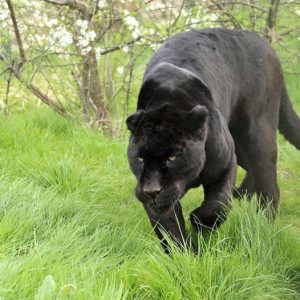Uk Bigfoot Research Group – The Hairy Pedestrian

THE HAIRY PEDESTRIAN (SUSSEX)
In January 2014 a creature resembling a Woodwose or Bigfoot was apparently hit by a car in Sussex. A contact of mine put me in touch with Sergeant X of the Sussex Police Roads Policing Unit (anonymised for reasons of professional reputation). When I met with him, he was able to show me redacted copies of the various police reports, and he provided me with full details of the case, having previously sought the consent of the motorist concerned.
Whilst the motorist was happy for Sergeant X to pass me the facts of the case, she did ask for her identifying personal details to be withheld from publication, and is therefore referred to only as ‘Sandra’.
At nine thirty two PM on Thursday 9th January, 2014, the Sussex Police Control Room received its first 999 call of the night regarding a collision on the A22, a busy dual carriageway near the village of Halisham. The caller, a lady who identified herself as Sandra, sounded deeply distressed, and reported that she had hit someone who had run out in front of her car. Almost simultaneously, two further calls came in from motorists who said they too had witnessed the accident. One of them reported having seen a person hit by a car ahead of them, roll into the road and then run off across the opposite carriage way. The other call was from a driver travelling in the opposite direction (south) who had seen a creature flee the accident on the northbound carriageway, bound across the road in front of him, and cause him to swerve into the verge to avoid a further collision.
Sergeant X and his crewmate, Constable Y, were duly dispatched to investigate the incident.
The records show that the officers arrived on scene at nine forty five. As is common in emergency calls, there had initially been some confusion as to the exact location of the accident. It turned out to be on the northbound carriageway of the A22, just south of the village of Halisham. The road here was dark and unlit, and cut through the thick forest of Abbot’s Wood. It was raining steadily, and a storm was brewing. The traffic was sparse, but fast.
The police officers came across Sandra’s Ford Focus, parked up on the verge of the northbound carriageway. They pulled up behind her vehicle, closing the inside lane whilst they assessed the situation. Sandra, a middle aged Human Resources manager, was very upset. She explained that she had been driving from the direction of Polegate when someone ran straight into her path from the tree on her near side. She hardly had time to brake, and estimated that she hit the victim at around sixty miles per hour. She told the officers that her car had skidded for some considerable distance, and thrown the casualty some twenty feet down the road. The person had lain on the tarmac in the glare of her headlights for mere seconds before getting up, and running across the other carriageway, causing oncoming cars to brake, before disappearing from sight into the woods on the far side of the road.
In accordance with their standard procedure, the officers breathalysed Sandra, and confirmed that she had no alcohol in her system. They examined her car, and found considerable damage to the front end, consistent with her account of having hit someone at speed. The grill was cracked, the number plate was broken off, and a deep and blood stained indentation was visible in the bonnet. The fact that her airbag had deployed confirmed the gravity of the impact. A brief scan of the area with their torches failed to locate a body. The officers, both of whom were experienced traffic police veterans, now feared the worst: a missing casualty who was almost certainly very badly, possibly fatally, injured. As per protocol in such situations, they decided to preserve the scene for further investigation. They radioed their control room and asked for colleagues to be dispatched to close the road in both directions. Fifteen minutes later, with the diversions in place to the south at the Polegate bypass roundabout, and to the north at the South Road / Halisham bypass roundabout, PC Y began a more systematic debrief of Sandra whilst Sergeant X started to search for the missing casualty.
By now, Sandra had calmed down, and her story began to change. She was no longer convinced that she had hit a ‘normal person.’ Sandra described how the victim looked ‘like the orangutan from the old Planet of the Apes movie’, only bigger, and without the clothing. She acknowledged that this description didn’t make much sense, but denied that her recollection was affected by the shock of the situation.
Meanwhile, at the request of the police control room, the south-bound motorist who had been forced to take evasive action as the casualty ran from the crash scene, had attended the police station at Bexhill-on-Sea to provide a statement. The perplexed officer who had been tasked to take the motorist’s statement contacted Sergeant X on the police radio to appraise him of the curious account the witness provided. The motorist had described a figure running across the road on two legs, causing him to swerve and brake hard. The figure he had seen was a heavily built biped, shaggy and loping as if injured. According to this witness it had ‘looked like a man, but it wasn’t a man’. He couldn’t, or wouldn’t, say exactly what it was he’d seen, but he remained adamant that it wasn’t human. The other witnesses, who had now been called back to provide more detailed accounts were of little help, claiming to have seen nothing but swerving cars, shadows and headlights.
Sergeant X requested the Accident Investigation Unit (‘Crime Scene Investigation’ specialists for traffic collisions) attend the scene, along with a lighting unit. Sgt X was very concerned. Not only was there a lot of blood on the front of the car, there were also long skid marks consistent with Sandra’s account, which ended in a pool of further blood where the casualty was said to have landed. The blood trail then led across the six foot grassy central reservation, across the southbound carriageway, and into the woods. From here, the blood trail became less obvious due to the darkness, and the permeability of the ground. In his long experience, few people survived a collision of this magnitude, let alone stood up and ran off afterwards. If indeed it was a person, they were likely to be seriously injured and in grave need of medical attention. To add to his worry, the rain was becoming steadily heavier, and thus gradually destroying any evidence that the scene might yield.
Whilst awaiting the arrival the Accident Investigation Unit and the Operations Team who would bring the spotlights, Sergeant X put in a request for two more specialist teams: a dog handler, and the helicopter. Hopefully the dog would be able to track the casualty down, and if that failed, the helicopter, with its thermal imaging camera, would be able to spot them in the depths of the forest.
Neither the dog nor the helicopter took long to arrive. Sergeant X briefed the dog handler, who guided his German Shepard dog to the edge of the road where the blood trail petered out. The dog had been trained to track the most recent scent leading from any particular location. Hence Sergeant X had been careful not to enter the woods where he would have contaminated the scent of the casualty and confused the track. As he had hoped, the dog quickly picked up a scent and began leading it’s handler into the forest.
From the air, the helicopter had picked up a man-sized heat signal with their thermal imaging sensor. They could also make out the image of the dog and it’s handler, and confirmed that they were heading directly towards the image.
Sadly, the growing storm forced the helicopter to return to base in accordance with their risk assessment. As the rain turned torrential, the dog began to lose interest in the track, and eventually refused to go any further into the woods. The dog handler replaced the dog in the van, and – together with a number of local officers, who had now arrived to assist – he ventured back into the woods with a torch to conduct a physical search of the area surrounding the heat source.
Back at the scene of the accident, and now struggling against the deteriorating elements, Sergeant X and the accident investigation team began a closer inspection of the damage to the vehicle. They discovered a chunk of blood-matted fur embedded into the dented grill. It quickly became apparent that the fur/hair was not human; it was rough, thick and dark, and smelled strongly of ‘wet dog’. It was now that Sgt X and the team began to seriously consider whether the car had in fact hit a person after all. Could it have been a dog, or a deer perhaps? The witnesses were adamant that it had been a biped.
By now, the search team in the woods had all but given up. The visibility was virtually zero and, just yards from the road, the undergrowth became impregnable. The rain was rapidly destroying any evidence that the scene itself might have yielded. Combined with the curious remnants which had been discovered in the car grill, Sergeant X made the difficult decision to call off the search and close down the scene. He reasoned that the chances of the casualty being human were slim. No one had been reported as missing, no human could reasonably be expected to have survived the impact, and any person, let alone a badly injured one, would have struggled to get through the dense undergrowth in which the heat source had been detected.
With no apparent crime, and the official decision that no individuals’ welfare was at stake, there was ultimately no justification for submitting the hair or blood sample for a costly analysis. Sergeant X did, after all, represent the police and not the Natural History Museum. So with much regret, and some unease, the case was closed as an ‘animal related collision’.





